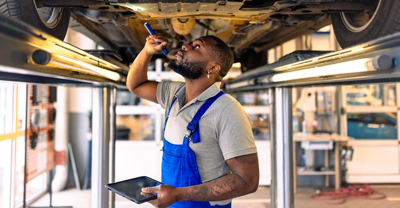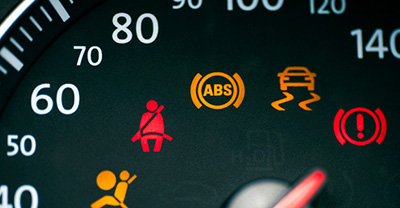Six tips you should know for better gas mileage


0 min. read
Gas prices can change fast—sometimes even daily. And when prices are high, those quick stops at the gas station can add up fast. Whether you're commuting daily or planning a road trip, improving your gas mileage can be a smart way to save. Here are six practical ways to get the most out of every tank.
What is gas mileage, and what is considered good?
Gas mileage is the measurement of how far a vehicle can travel on one gallon of gas—measured in miles per gallon (mpg). The higher the mpg, the further you can drive before refueling. As you increase efficiency, you experience better fuel economy.
“Good” gas mileage is determined by several factors:
Vehicle type
Fuel type
Driving habits
Driving location
Hybrid and electric vehicles (EVs) have the best overall fuel economy ratings. For example, the Toyota Prius earns an impressive rating of 54 mpg combined*. This value is an average of its 51 mpg city and 58 mpg highway ratings measured under ideal conditions.
You can look up the manufacturer’s rating in the car’s owner’s manual or use a gas mileage calculator. Many newer vehicles automatically keep track of your gas mileage or have the option to store mileage data. Not happy with your current fuel economy? Consider the following six tips to help improve it.
1. Keep your tires properly inflated
Tire pressure—measured in pounds per square inch (PSI)—can affect fuel efficiency, handling, and how long your tires last. You can usually find your vehicle's recommended PSI on a sticker inside the driver's door or in the owner’s manual. Underinflated tires create drag, which means your engine works harder and uses more fuel.
2. Use cruise control for highway driving
Cruise control can keep your vehicle at a steady speed, which is good for fuel efficiency. According to an article on MyCarVoice, cruise control can help improve fuel efficiency—especially on highways—by maintaining a consistent speed and reducing unnecessary acceleration and braking. The U.S. Department of Energy estimates that using cruise control can improve fuel economy by an average of 7% and up to 14% in ideal conditions*.
Cruise control is most effective when driving flat, traffic-free road conditions. In hilly areas or in stop-and-go traffic your vehicle’s attempt to keep your speed constant can cause frequent acceleration and deceleration, using more fuel. Some vehicles now also have adaptive cruise control as part of their safety features, which changes your speed based on how close you are to the vehicle in front of you.
3. Replace your air filter regularly
When your air filter is dirty, it restricts airflow, making the engine work harder and ultimately consume more fuel. Your owner’s manual will recommend how often to replace your air filter.
On average, change your air filter every 12,000 to 15,000 miles—or more often if you regularly drive in highly polluted or dusty areas.
4. Avoid excessive idling
It’s often tempting to leave your car idling briefly while you run inside to grab something you forgot, but idling for more than 10 seconds uses more fuel and emits more emissions than turning off your car and restarting it.
This habit is a significant fuel waster. According to the Office of Energy Efficiency & Renewable Energy in their Clean Cities initiative, an idling car can waste up to half a gallon of gas per hour and can release up to twenty pounds of carbon dioxide per gallon of fuel burned. When added up over a year, idling in traffic, in drive through lines, in the school pickup lane, and more could be costing you hundreds of dollars in lost fuel.
5. Stay up to date on oil changes
Regular oil changes help keep your engine lubricated—reducing friction and allowing your vehicle to use less fuel to produce the same power.
The time—or miles driven—between oil changes can vary based on engine size, type of oil, the age of the vehicle, and other factors. You can find the manufacturer’s recommendations in your owner’s manual. If you take your vehicle to an auto shop, they’ll typically provide a sticker or note indicating the date or mileage for your next oil change.
6. Lighten your load
Extra weight forces your engine to work harder and burn more fuel. For every additional 100 pounds, your fuel consumption can increase by up to 2%. Remove unnecessary weight like an unused roof rack, extra seats, sports equipment, or heavy items from your trunk.
Be prepared with the right insurance
Unexpected car troubles happen, even with careful maintenance. Be prepared with reliable and affordable car insurance. If you're already focused on saving at the pump, explore insurance options that offer flexibility and value.
Contact our team for a free quote, and be sure to ask about insurance discounts to help cut your vehicle-related costs even further.

The general information in this blog is for informational or entertainment purposes only. View our blog disclaimer.
*Data accuracy is subject to this article's publication date.










